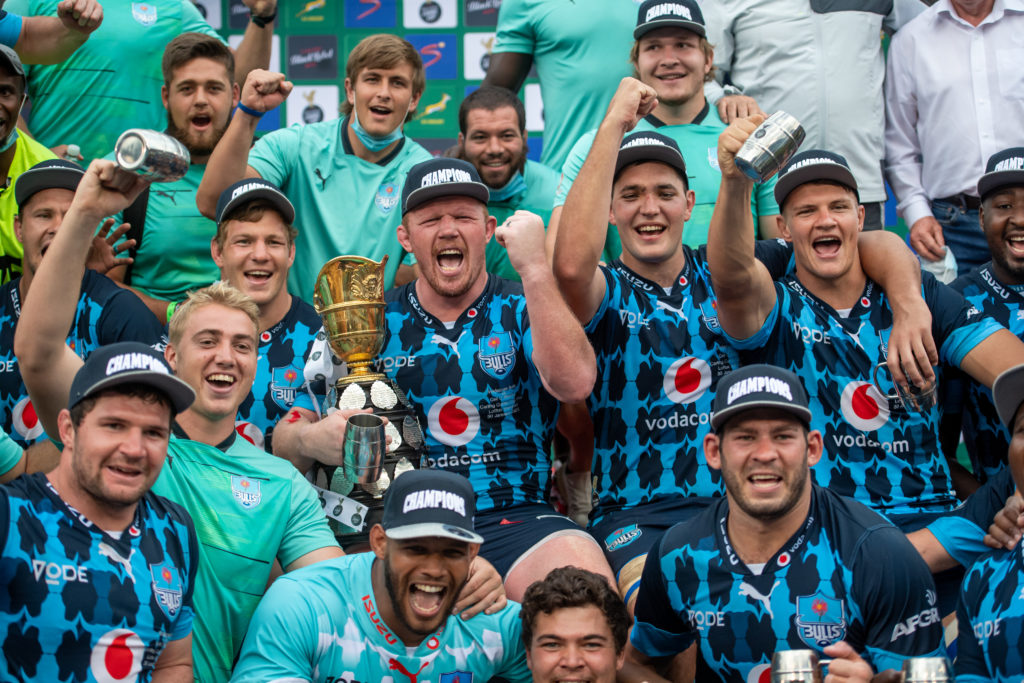After the Bulls’ latest signing of Johan Goosen, SA Rugby magazine breaks down how the Pretoria franchise is going about its business of balancing the books.
The regularity of the Bulls’ player signing announcements, headlined by the recruitment of players such as Goosen, Marcell Coetzee, Jacques du Plessis, Gio Aplon, Duane Vermeulen and Morne Steyn has led to some questions around salary-cap and player-budget restrictions.
In the latest SA Rugby magazine, which is now on sale, we take a closer look at the primary reason of introducing the salary cap – the broad strokes of which are that franchises have a R60-million annual budget for no more than 45 contracted professional players.
Interestingly, the MyPlayers organisation researched what New Zealand and Ireland were paying their players, a fact-finding mission which revealed those countries – which were first- and second-ranked in the world at the time – were paying the equivalent of R45m per team compared to their South African counterparts’ R57m.
‘We were paying R12m more per team than they were paying, so we needed to get into line,’ chief executive Eugene Henning commented.
With the suspicion that in all collective agreements someone is bound to step out of line, some critics have raised eyebrows at the Bulls’ spending, considering their salary bills before the cap had been closer to R100m per annum.
However, CEO Edgar Rathbone almost welcomed the opportunity to clarify that enduring narrative.
‘The salary cap is monitored from January to December, and for most of last season we had only 40 players instead of 45,’ he said. ‘We’ve walked away from a few transactions where we can see the numbers were being chased up.
‘We’ve got a fixed number that we can offer and as soon as the number goes over that, we walk away. The reality is, if a player really wants to come to the Bulls it’s not just going to be about money; and if it is we’ll walk away.’
Having worked as commercial manager at the Lions, Rathbone said there was a logical way to stay within the salary cap: ‘What is important is that you need to base your budget on real numbers. At the Lions we said our player budget was going to be based on numbers that we know.
‘Those are broadcasting and sponsorship rights because you know what that the are going to be. Any ticket or Test match revenue is flexible from year to year … that’s part of the thinking behind the salary cap, to help you plan your spending a lot better.’
The Bulls have also been at pains to make sure that most of the players they’ve attracted were also of interest to SA Rugby director of rugby Rassie Erasmus, as this leads to a Players of National Interest (Poni) contribution, which falls outside the salary cap.
While much has been made of the incoming players to Loftus, they have also freed up some space on their books after the exits of players such as Burger Odendaal, Tim Agaba, Jaco Visagie, Ivan van Zyl, Divan Rossouw, Ruan Steenkamp, Andries Ferreira, Juandre Kruger and Johnny Kotze.
More recently Marcel van der Merwe has been released on a medical joker deal to Perpignan, while Francois Hougaard was one of the targeted players who ultimately never headed to Pretoria.
In a recent broadcast message, Bulls president Willem Strauss also addressed the ‘perception by our opponents supporters that we are “buying success”.’
However, he insisted the Bulls were well within the salary cap, stating:
‘1) We have offloaded a substantial amount of players who are deemed not good enough and/or not part of Jake’s plans. They are replaced by quality players. This takes incredible skill and planning of Jake and [CEO] Edgar [Rathbone] ( the best I’ve seen in my 32 years career) which they made me part of.
‘2) We have a Jake White! Players want to play for him, even though they can make more money elsewhere. Everyone likes to be part of a winning team. Everyone one wants to be coached by a world-class coaching staff in a High Performance environment.
‘3) Us as leadership, shareholders and stakeholders at every level have created a stabile and dynamic environment which is geared for success. From our elite squads at school level, clubs up to professional level are working towards the same vision.
‘4) Our structures are aligned at amateur and professional levels keeping our feeder systems and pipelines strong and healthy.’
He added light-heartedly: ‘I must admit that I prefer this jealousy angle, and having a target on our back, much more than the mockery we as Bulls fans had to endure the previous decade.’
READ: What’s in our latest issue?





